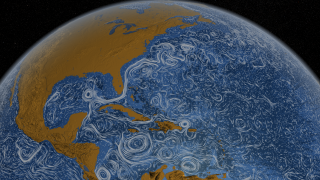This is… surreal.
Art
VICTORY
I have submitted five stories today. FIVE. I think that beats my previous monthly total. Not only that, I think I’m caught up: the two still languishing were written in 2011 and aren’t up to my current standards. I either need to completely rewrite them or trunk them.
I am now completely braindead and exhausted.
I was checking out at the grocery store. The undergrad-looking clerk told the guy ahead of me that he was doing a project for class on classic movies. The two of them discussed The Princess Bride and a few other things.
When my turn came, the clerk asked me my favorite movie? I asked if he wanted classic, and he said sure.
“Casablanca, no contest.”
“Yeah? What’s that about?”
I looked at him blankly for a moment. “You need to just watch it.”
“That’s pretty old, isn’t it? What about something newer?”
“It’s in black and white, even. But it’s an excellent movie: Humphrey Bogard, Ingrid Bergman.” This time the blank look was his.
I proposed The Usual Suspects as a “newer classic.” He’d at least heard of Kevin Spacey. We discussed The Shawshank Redemption and Stand By Me, apparently both more his idea of classics, though he hadn’t seen either.
I left him with a parting admonition to watch Casablanca. I wonder if he will.
I came away feeling old, and sincerely hoping that this guy isn’t a film major.
Science and art
This is SO COOL.
Wild Things
Maurice Sendak, 1928-2012.
This interview with Sendak on Fresh Air last fall made me cry the first time I listened to it.
And then, of course, there’s the Colbert interview (part 1, part 2).
Everything else I can think of to say sounds trite when compared with those interviews.
Science Paper Art
I saw Lisa Nilsson’s anatomical paper art on NewScientist this morning.
It’s gorgeous, and precisely hits my sweet spot linking scientific accuracy, beauty, and clever use of materials to mimic form.

Scientific visualization
I’m waiting eagerly for the computer to churn out the results I need for the talk I’m writing. I’m giving it a week from Monday, so some results would be nice. (Highly-trained professional, closed course. Do not attempt at home.)
While I’m waiting, I’ve been looking at some recent scientific visualizations. Ways to portray data that are both informative and beautiful are an interest of mine, and these three examples are really quite good.
Perpetual Ocean: Animated map of global ocean currents from the Scientific Visualization Studio at NASA Goddard Space Flight Center. The video is lovely.
Hint.fm has put together a similar visualization for winds over the United States, only this one is near real-time. Then compare that to this NASA Earth Observatory map of two extreme circulation patterns that caused drought or flooding.
How about a look at atmospheric composition instead of currents? This visualization of carbon dioxide concentration in the atmosphere from NOAA’s Earth System Research Laboratory clearly makes the case that the Industrial Revolution changed not just society but the atmosphere as well.
And now, I have some data of my own to visualize.
Science and art and nonsense
My friend Tom left this link on a previous post about science and art: Bathsheba Grossman. I’d looked at her work before, but I don’t think I’d posted it. Science, math and 3D printing- what’s not to like?
Another friend, Eric, left an interesting comment on my post about November writing lessons.
Eric’s comment, reprinted to save you from wandering back and forth:
What NaNoWriMo was not good for this year: I did not write anything close to 50k words, generating about 10k if you include a section of notes I drew up.
What NaNoWriMo was good for this year: I figured out some things about my writing and how I ought to be writing, if I can just implement them and make them work. I learned that I probably need to start writing things backwards instead of trying to write one-thing-leads-to-another like George R.R. Martin or someone like that. I learned that I probably need to stop beating myself up if I don’t write any fiction on a day but still managed to leave a long comment on someone’s blog or elsewhere (e.g. a long forum post defending Star Trek, speaking purely hypothetically).
The big one was the “writing backwards” bit, if I can just teach myself how to do it. Though “not beating myself up” may be important, too: I think I’m realizing something similar to what you said about writing every day, and for almost identical reasons.
So I’m sort of feeling like NaNoWriMo was a “win” for me, even if it absolutely wasn’t even close in formal terms.
Eric and I have had long angsty discussions about similar issues before, and especially on the pros and cons of writing every day.
The moral: there’s no one true way.
This is important.
Irrelevantly, and tantalizingly, the day Eric left that comment he also wrote one of the funniest things I’ve read in ages. And no, I can’t share it with you, but if you ask nicely he might be persuaded to revise it for public consumption.
Changing the subject completely, this Counterexamples to an Old Earth came across my internet today, via Cheryl Morgan and several other people.
This is a fascinating and brain-hurting example of cherry-picking facts, extrapolating trends outside their proper bounds, and every logical fallacy known to philosophers. A number of the trends cited as evidence for a young earth are actually direct or indirect consequences of anthropogenic global warming, and thus relatively recent, but are warped into justification for recent creation.
And that’s leaving aside the factual inaccuracies, which are legion.
If I were still teaching, I think I’d use this as class discussion material.
And now, if you’ll excuse me, I’m hip-deep in Django today, and kind of having fun with it. I’m evaluating candidates for the obsolete web application that broke when I upgraded my work server. It looks like it would take almost as much time to fix it as it would to switch to something current. Science involves a lot of background stuff that needs to be done just so you can get to the good bits, and data management figures heavily in that category.
Neat stuff
I’ve been accumulating things. Time to pass them on.
The Moscow dogs and the Chicago coyotes: fascinating examples of canine adaptability to urban environments. The Moscow dogs have so far done a better job of fitting into urban patterns, possibly because they come from stock selected for dealing well with people over the past few millennia, or because they’ve had longer to practice. The coyotes mostly stay out of the way, but the dogs have learned to let the cute ones beg for food, and even to ride the Metro.
There’s a lot of ire about the “Futures in Nature” story I ranted about. This is my favorite commentary.
Laura has sent me several interesting things: an exploration of octopus psychology; Nathalie Miebach, an artist who turns scientific data into sculptures; and this video about making a coral reef. She shares my fascination with the art-science interface, though she’s a much better artist than I am.
So anyway
These are the things I had intended to post this morning when I got sidetracked.
(By “this morning,” I mean “Monday”, and by “sidetracked,” I mean “completely swamped.” Just so you know.)
XKCD has a timeline of future events. SF writers, there’s an entire career’s worth of ideas in here. You have to go there, because you have to read the mouse-over comment.
Something I couldn’t have posted until today regardless (and part of what I was so busy with on Monday): I have a new review on The Portal, this time of the F&SF May/June issue.
“How to Steal Like an Artist,” interesting and possibly useful advice from Austin Kleon. Finding ideas, learning who you are, pretending to be something you’re not.
Oh right, I only had two things on Monday. Maybe that’s why I didn’t post anything.
